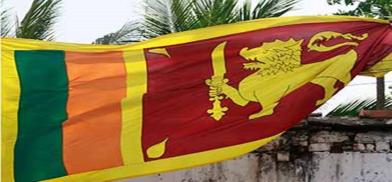Crisis-hit Sri Lanka's budget expected to be one of the 'trickiest' in history
In an indication that Sri Lanka’s financial woes are far from over, a senior economist has said the country’s 2022 budget will not be able to provide relief to the public given the shaky nature of the budgetary management and lack of sources to finance it

In an indication that Sri Lanka’s financial woes are far from over, a senior economist has said the country’s 2022 budget will not be able to provide relief to the public given the shaky nature of the budgetary management and lack of sources to finance it. Finance Minister Basil Rajapaksa will deliver the 2022 budget on November 12 and it is expected to be one of the trickiest budgets in Sri Lankan history amid sharp revenue shortfall, rising expenditure and excess money printing which has depleted foreign currency reserve and made it difficult to repay debt or and also import foods.
The Covid-19 pandemic has made it worse, though lack of reforms for cohesive and long-term economic policy and intensified monetary instability from lack of rule-based monetary policy have been the key reasons for Sri Lanka’s economic ailments. “They’re expecting a big relief from the budget,” senior economist Sirimal Abeyratne said: “Obviously the budget cannot provide relief without somebody out there to finance it.”
“When we look at our budget management, it has been in a very shaky situation not due to the pandemic, but long years it has been there.”
Sri Lanka’s public is usually made to expect relief from budgets by politicians, who – sometimes unknowingly – destroy the currency and push up the cost of living on, egged on by stimulus-happy bureaucrats and ‘economists’ who want to keep interest rates down.
Sri Lanka recently ended price controls, which were used to create shortages by the Consumer Affairs Authority, amid money printing, leading to a sharp rise in some goods. Goods without price controls have already gone up.
Sri Lanka’s revenue has fallen to a record low of 9.2 percent of the GDP in 2020 since the data available from 1950, from a record high of 28.9 percent in 1978.
The monetary instability, critics say, denied the country the benefit of economic liberalization and triggered strikes and social unrest though free trade and foreign investment led to export growth.
In 2020 Sri Lanka recorded a budget deficit of close to 14 percent of GDP, according to government accounts certified by the Auditor General though officially it is claimed to be 11.1 percent.
Sri Lanka is suffering from reckless ‘revenue-based fiscal consolidation’ in recent years where ‘spending-based consolidation’ was pooh-poohed, ratcheting up spending to 22 percent of GDP by 2019 from 17 percent in 2015 critics say.
In late 2019 taxes were cut leaving rigid spending and high-interest rates from monetary instability intact. In 2021 the deficit is expected to be around 10 percent of GDP.
With the pandemic, the government, instead of borrowing at market rates and reducing domestic consumption has resorted to central bank credit, blowing the external sector-wide open, according to EconomyNext.
Meanwhile, Abeyratne said Sri Lanka has so far failed to come up with a long-term economic policy direction for the country and the island nation has hard choices when it comes to budgets which have become ad hoc measures without being part of the overall long term policy direction.
“The budget has to be consistent with the long-term plan for the agenda, showing, this is our direction, and this is where we are moving and showing it to consumers, investors, the international community, and all these multilateral bilateral associations that we are dealing with,” he said.
“We have to show that direction and then in that context when you present the budgets annually, which are consistent with your long-term plan.”
(SAM)








Post a Comment